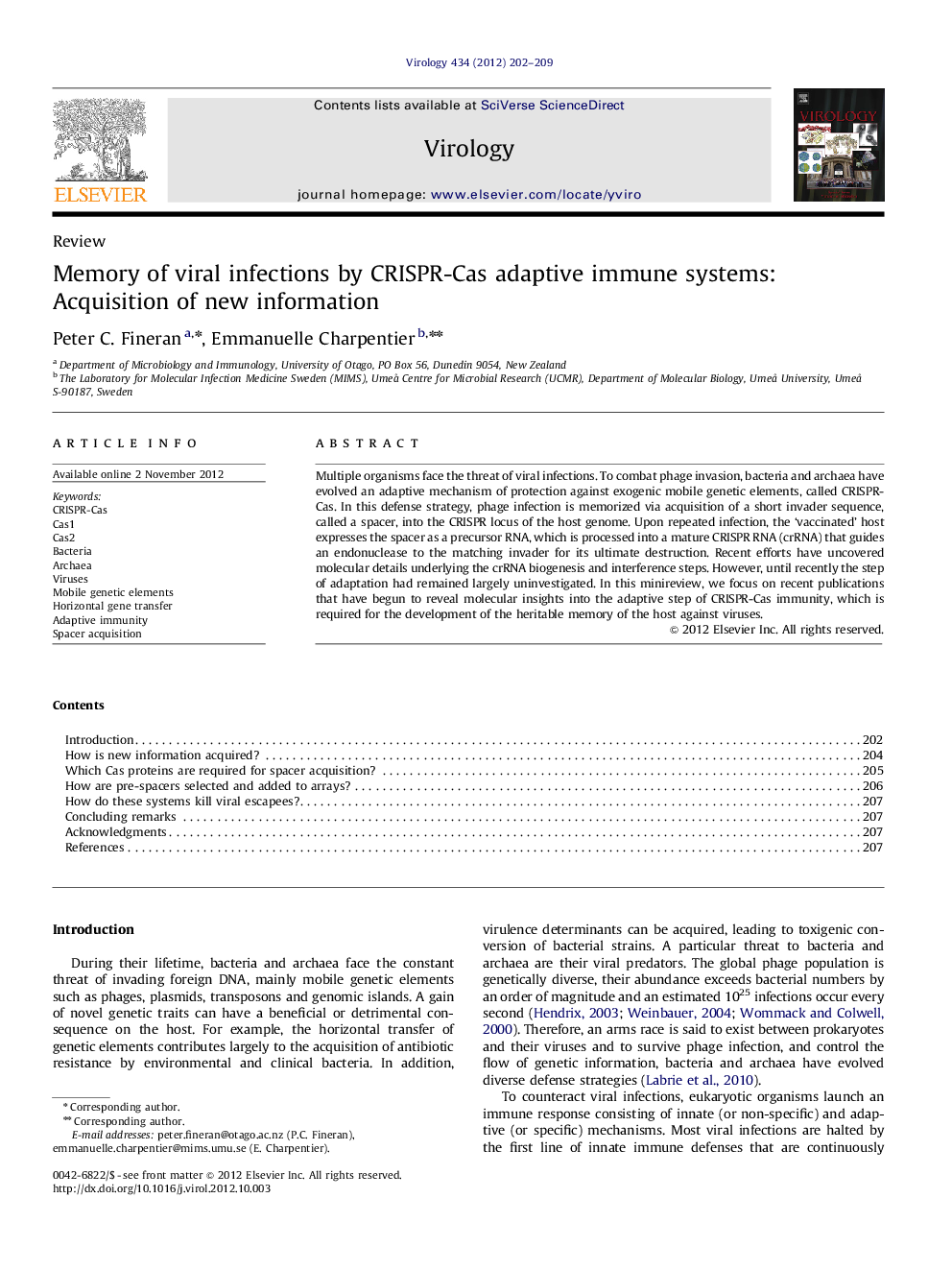| Article ID | Journal | Published Year | Pages | File Type |
|---|---|---|---|---|
| 3424279 | Virology | 2012 | 8 Pages |
Multiple organisms face the threat of viral infections. To combat phage invasion, bacteria and archaea have evolved an adaptive mechanism of protection against exogenic mobile genetic elements, called CRISPR-Cas. In this defense strategy, phage infection is memorized via acquisition of a short invader sequence, called a spacer, into the CRISPR locus of the host genome. Upon repeated infection, the ‘vaccinated’ host expresses the spacer as a precursor RNA, which is processed into a mature CRISPR RNA (crRNA) that guides an endonuclease to the matching invader for its ultimate destruction. Recent efforts have uncovered molecular details underlying the crRNA biogenesis and interference steps. However, until recently the step of adaptation had remained largely uninvestigated. In this minireview, we focus on recent publications that have begun to reveal molecular insights into the adaptive step of CRISPR-Cas immunity, which is required for the development of the heritable memory of the host against viruses.
► CRISPR-Cas provides heritable adaptive immunity against viruses in prokaryotes. ► Cas ribonucleoprotein complexes target invading nucleic acids for destruction. ► Adaptation involves addition of invader-derived nucleic acids to the host CRISPR. ► Cas1 and Cas2 are conserved proteins that are essential for adaptation. ► Recent advances in our understanding of CRISPR adaptation are reviewed.
